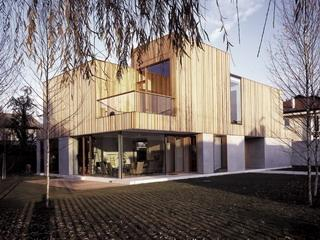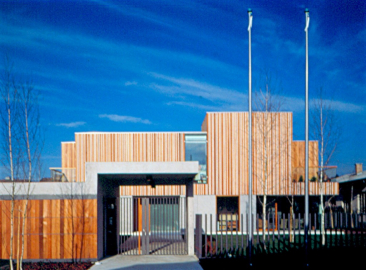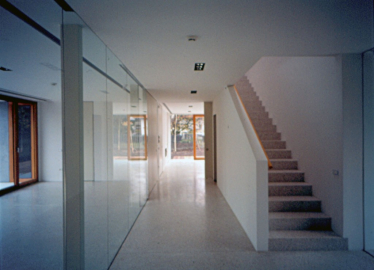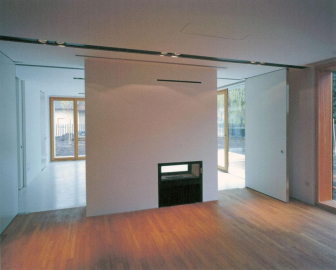Royal Dutch Embassy, Ambassador s Residence
Royal Dutch Embassy, residence Ljubljana
The location of the residence is in the former farmland/village area on the outskirts of the city of Ljubljana, near a small artificial lake.
The area has expanded in the recent years to become a mixed residential neighbourhood, while still retaining a lot of its original village character.
The residence building was designed and built over a period of 12 months, on a previously empty plot of land bordering a recent commercial housing development.
The duality of the programme of a residence (a combination of public and private functions that take place in it) results in a clear duality of the architectural approach. Architectural concept is based on a clear separation and articulation of this duality.
Lower part of the building, the base which contains programs often used for public functions (receptions, parties, etc.) is built as three solid rooms that act as columns, supporting the floor above. Three column/rooms are ambassador s workspace/study, library and service areas. The space in-between is a fluid space of interconnecting areas hall, dining area and drawing room, which are separated from each other by means of large sliding doors. These in-between spaces open up towards garden area via full size glass walls.
The upper area, resting structurally on the three solid volumes underneath, is a private appartment of the ambassador and his family in a manner similar to dutch productive approach to landscape, the space is divided into series of bedrooms that open up towards the private part of the garden, as well as a living area (tv room) that, althoug small in size, is given a generous height and opens up towards a series of very old trees on the neighbouring plot of land.
The duality of the programme results also in the duality of material reatity of the building. The materials used on the lower, public floor are polished concrete, terazzo and glass, while the upper, private house is clad in different-width planks of natural colour untreated cedarwood, with covering planks in white-stained cedarwood. Over time, the wood is going to turn silver-grey, thus attaining the diplomatic pinstripe-suit appearance






